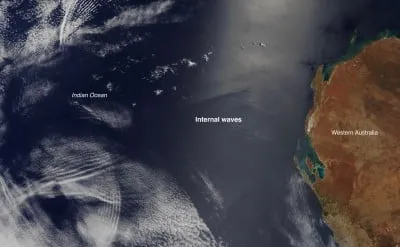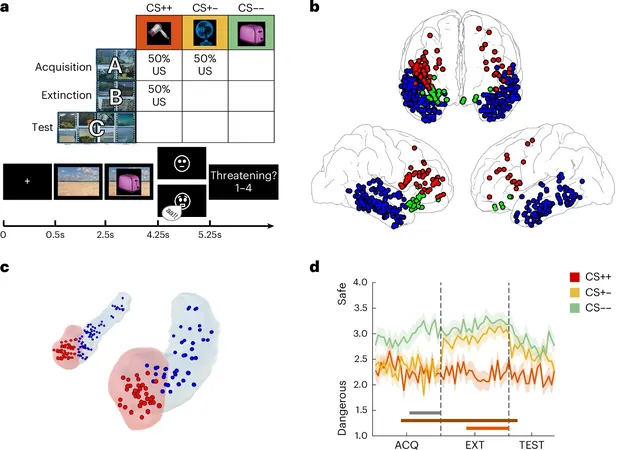
Unveiling the Ocean's Secrets: RPI Mathematician Models Internal Waves for Climate Accuracy
2025-07-24
Author: Mei
Beneath the tranquil surface of our oceans lies a hidden world where powerful internal waves churn and flow, influencing crucial aspects of oceanic circulation. These mysterious waves, which travel between layers of varying temperatures and densities, are vital in transporting cold, nutrient-rich water from the depths—playing a pivotal role in sustaining marine life and regulating our climate.
In a groundbreaking study published in Nature Communications, Dr. Yuri V. Lvov, a mathematics professor at Rensselaer Polytechnic Institute (RPI), alongside a talented team of oceanographers, has created an innovative model of internal wave dynamics. This highly sophisticated model promises to enhance our understanding of ocean circulation, potentially leading to improved climate predictions.
"Internal, wave-driven, vertical mixing is believed to be a main driver of oceanic circulation," Lvov explained. This powerful mechanism significantly influences sea levels, nutrient flows, marine ecosystems, and the absorption of heat and carbon from human activities.
What makes this model revolutionary is its foundation in wave-wave interaction theory, which elucidates how internal waves exchange energy during interactions. According to Lvov, the challenge has been constructing a theory detailed enough to accurately reflect these complex processes. "The ocean is immense, and the intricacies of internal waves operate at scales too small for current global models to effectively capture," he said.
Employing a first-principles approach, Dr. Lvov’s team parameterized the physical aspects of internal wave dynamics without relying on conventional high-resolution numerical modeling. They interpreted turbulent mixing as an energetic process at the end of a cascade of energy distribution within the internal wavefield—driven by larger forces and sustained via wave interactions.
"Our findings strongly correlate with observational data, indicating we've successfully identified the key dynamics of wave interactions and their role in turbulent mixing," Lvov noted. Surprisingly, the study revealed that local interactions had a dominant effect on energy transfers across scales, overturning pre-existing assumptions.
Dr. Peter R. Kramer, head of the Department of Mathematical Sciences at RPI, praised the publication, emphasizing its significance in advancing ocean circulation models. "This research merges mathematical analysis with robust physical modeling, showcasing the interdisciplinary focus of our department," he stated.
Dr. Lvov has been exploring the complexities of internal waves since he joined RPI in 1999, and this paper marks a significant milestone in his career. He extended heartfelt appreciation to lead author Giovanni Dematteis and the dedicated scientists who contributed to this research.
As RPI continues to forge new paths in scientific research and education, this breakthrough model serves as a reminder of the vital interplay between mathematics and the natural world, bringing us one step closer to understanding the complexities of our changing climate.



 Brasil (PT)
Brasil (PT)
 Canada (EN)
Canada (EN)
 Chile (ES)
Chile (ES)
 Česko (CS)
Česko (CS)
 대한민국 (KO)
대한민국 (KO)
 España (ES)
España (ES)
 France (FR)
France (FR)
 Hong Kong (EN)
Hong Kong (EN)
 Italia (IT)
Italia (IT)
 日本 (JA)
日本 (JA)
 Magyarország (HU)
Magyarország (HU)
 Norge (NO)
Norge (NO)
 Polska (PL)
Polska (PL)
 Schweiz (DE)
Schweiz (DE)
 Singapore (EN)
Singapore (EN)
 Sverige (SV)
Sverige (SV)
 Suomi (FI)
Suomi (FI)
 Türkiye (TR)
Türkiye (TR)
 الإمارات العربية المتحدة (AR)
الإمارات العربية المتحدة (AR)